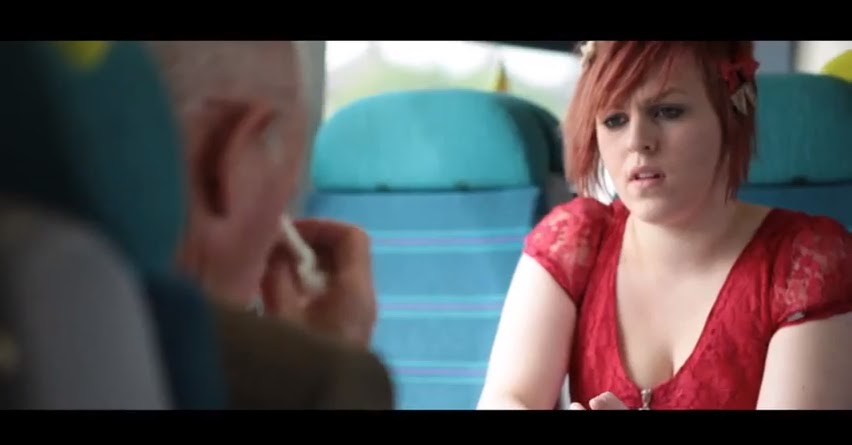Martin Scorsese once famously asked, “How do you frame a close up with widescreen?” This was a common criticism when widescreen first became popular. The beauty of 4×3 Acadmey Ratio is how it beautifully fits a human face. 16×9 and 1.85 are still relatively conducive to closeups but once you start getting into the 2.35 and above range, there’s a lot of wasted screen real estate in a full face closeup. Sometimes you’ll want that emptiness…
But sometimes you may want to use a technique of crafting your own specialized spaces inside your frame. The traditional word for this is mise-en-scene – literally placing on stage. By carefully composing your shot with a mix of foreground and background objects you can make really cinematic composition.
My work Train station farewell
Here we used the back of an actor’s head to reduce the size of the space we’re using to frame the other actor speaking. Even though we’re shooting here with a 2.35 aspect ratio, the area of interest is significantly smaller. This technique of including unwanted elements is also called “Dirtying up the frame”
One of my favorite techniques is using doorways as in this Godfather inspired sequence. Notice the walls and door way
used to break apart the shot.
used to break apart the shot.
This Mis-en-scene approach to composition is really made possible by the widescreen aspect ratios. Orson Welles started the trend in Citizen Kane with his unique blocking but it became much easier when filmmakers had a wider canvas to work on. Generally speaking The wider your screen the more you should incorporate mis-en-scene in your compositions and rely less on montage (cutting) – or don’t. It’s up to you.




No comments:
Post a Comment